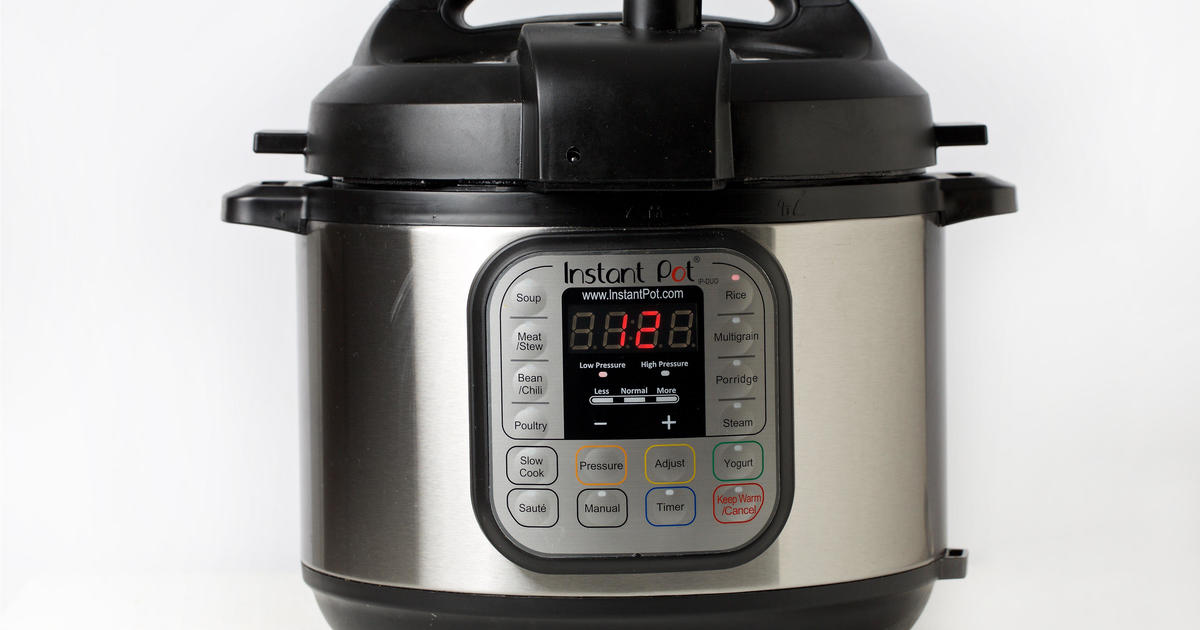- cross-posted to:
- news
Since COVID, company has faced “additional global macroeconomic and geopolitical challenges,” CEO Ben Gadbois said.

I love my instant pot. Best way to decarb weed for cooking

I never thought to use it like this. Any chance you would describe the process briefly?

Sure! However it will be thorough not brief.
Decarboxylation
- 1 pint mason jar
- 1/2 ounce herb
- Roughly grind up the herb and place in the mason jar. Place lid and ring on the jar and close to finger tight.
- Place the jar in the Instant Pot on the canning rack or use another lid ring to prop off the bottom of the pot. Fill the pot with water up to the halfway point on the jar
- Close the lid and set to pressure cook on high for 30-40 minutes.
- After the cycle is complete, release steam/pressure.
- Carefully remove the jar and let cool.
And because your instant pot is already out of the cupboard from decarbing here is the infusion instructions:
Infusion
- 1 pint mason jar
- 1/2 ounce decarbed herb (As above)
- Around 200g butter (or other fat/oil). Enough to just cover the herb)
- 1 teaspoon sunflower lecithin
- Use the same jar you decarbed in if doing these one after the other
- Melt fat in the microwave (1-2min) and pour over herb
- Add lecithin and stir
- Put lid and ring on jar and close to finger tight
- Place jar back in the Instant Pot with water halfway up the jar
- Close the Instant Pot and set to pressure cook on high for 20 minutes
- Make sure the “keep warm” setting is on
- Allow the pressure cooker to naturally release pressure for 40 minutes on the keep warm setting.
- Carefully remove the jar and remove the lid once cooled down a bit.
- Strain butter through cafetiere / cheesecloth / whatever
For steps 6-8 some people don’t like doing it in pressure mode. The alternative is to have it on slow cook for about 4 hours. I don’t think it makes a difference. I just do it differently depending on how much time I have available.

Thanks so much for this! I really appreciate you being so detailed. I’m going to try this shit out next time I make cannaoil

It appears that some private equity banker bros talked Instant Pot into a $450 Million Dollar loan in 2021 and then paid themselves $245 million of it.
Private Equity. Instant Pot had great cashflow but slowing sales, so the PE owners issued $450M in new debt and then immediately paid out $250M in dividends to themselves resulting in the company carrying 8x leverage compared to the 4x it had prior to the financial engineering. Further slowing sales and all the cash being stripped from the company ends up with bankruptcy every time.
These are the same kind of people who bought Toys R Us, filled it with debt from other companies they owned made millions and then killed the company and left their employees high and dry.

That’s unfortunate. I’ve been pretty happy with mine, and picked up some compatible items, like extra pots and lids.
That being said, I know that other companies produce similar products, and I’d imagine that they’re probably decent too.
googles
Yeah.
https://www.consumerreports.org/appliances/multi-cookers/best-multi-cookers-of-the-year-a7136971834/
Honestly, what I’d like is a device that can stir as well.

How tf could they go bankrupt, nearly every person I know has an instapot. It’s a household name at this point, a hyper successful product.

If every household has one, who is buying new ones?

Me, I wanna buy a new one! Was planning on getting my friends one for a gift soon too. Those things are super handy.
Sometimes I wish I had a second one. I would definitely use two at the same time if I had a second.

I have two and definitely use them both simultaneously from time to time. It’s a great rice cooker too.

bummer. from what I’d read the owner seems like a pretty decent guy who wanted to make functional stuff. Love mine 8L instant pot, I use it multiple times a week.

Any recipes you’d recommend? We have one but have barely ever used it.

Any slow cooker recipe can and should be made in an instant pot instead, imo. People mostly used slow cookers for the convenience of throwing a bunch of ingredients together and setting and forgetting. Instant pots do the same thing however cook way faster so you don’t have to do it in the morning and imo it tastes better. Meats stay juicier and it only takes like 25-45 min instead of 4-8 hours.
One I make all the time is you just throw in a jar of salsa verde, quart of chicken stock, big package of chicken thighs, can of your favorite beans, frozen corn and some cumin/garlic powder/chili powder/bay leaves and boom you made green chicken chili. Serve with pepper jack cheese.

Instant pots do the same thing however cook way faster so you don’t have to do it in the morning and imo it tastes better.
If you use them as a pressure cooker. They can also operate as a slow cooker and do the “throw in and forget and take out hours later” thing.

I most often cook rice, beans, or pasta in mine over a normal pot. Sometimes chilly or soups.

I have mix feelings about this. On one hand I really like my instant pot. On the other I don’t like what they turned the pyrex brand into.

TIL Instant owns Pyrex.

Me too. And Corningware, which is my family’s favorite brand of dishes / bowls. The Corelle line specifically.

What happened to Pyrex? You mean the move away from borosilicate glass?

@tal Yes. PYREX sold licensing to other manufacturers to use the branding “pyrex,” but “pyrex” is made with tempered glass which can shatter during extreme temperature fluctuations, many of which are common in cooking situations. PYREX is still borosilicate glass and shatter-proof.

Any idea why they made the change? Just cost related?

https://en.wikipedia.org/wiki/Pyrex
Beginning in the 1980s, production of clear Pyrex glass products manufactured by Corning (and later Instant Brands, after the consumer division was spun off and renamed) was also shifted to tempered soda-lime glass, like their popular opal bakeware.[22] This change was justified by stating that soda-lime glass has higher mechanical strength than borosilicate—making it more resistant to physical damage when dropped, which is believed to be the most common cause of breakage in glass bakeware. The glass is also cheaper to produce and more environmentally friendly. However, its thermal shock resistance is lower than borosilicate’s, leading to potential breakage from heat stress if used contrary to recommendations. Since the closure of the soda-lime plant in England in 2007, European Pyrex has been made solely from borosilicate.[4][23][24]
The differences between Pyrex-branded glass products has also led to controversy regarding safety issues—in 2008, the U.S. Consumer Product Safety Commission reported it had received 66 complaints by users reporting that their Pyrex glassware had shattered over the prior ten years yet concluded that Pyrex glass bakeware does not present a safety concern. The consumer affairs magazine Consumer Reports investigated the issue and released test results, in January 2011, confirming that borosilicate glass bakeware was less susceptible to thermal shock breakage than tempered soda lime bakeware.[25] However, they admitted their testing conditions were “contrary to instructions” provided by the manufacturer.[21][26] STATS analyzed the data available and found that the most common way that users were injured by glassware was via mechanical breakage, being hit or dropped, and that “the change to soda lime represents a greater net safety benefit.”[23]
Though I imagine that cost might also be a factor.

Note that there are other manufacturers of borosilicate glass cooking items, as well. If you hit Amazon and plug in “borosilicate glass”, you’ll get products from a bunch of manufacturers.

I’ve lost so much trust with dodgy items from Amazon, I’d not be surprised if a lot of the borosilicate on there is just tempered glass.

At this point Amazon is just Aliexpress with higher prices.

I don’t know if the brand OXO is available to you, their glassware is he same quality as old PYREX.

Also, OXO I generally find is pretty good in terms of quality. They were started with accessibility in mind so their tools can be mostly easily used by people with arthritis.

Non-American here, what’s an instant pot?

It’s a pressure cooker with additional functions like saute, slow cooking, etc.

Aw that sucks, I do have one and it’s pretty amazing.
Usually I don’t give a crap if some big corporation goes down, it’s a different matter (in my own personal mind) when someone who actually “builds stuff” goes though a hard time.

Well, bankruptcy doesn’t necessarily mean that a product is dead. Some other company will potentially buy their assets and could continue the brand.



